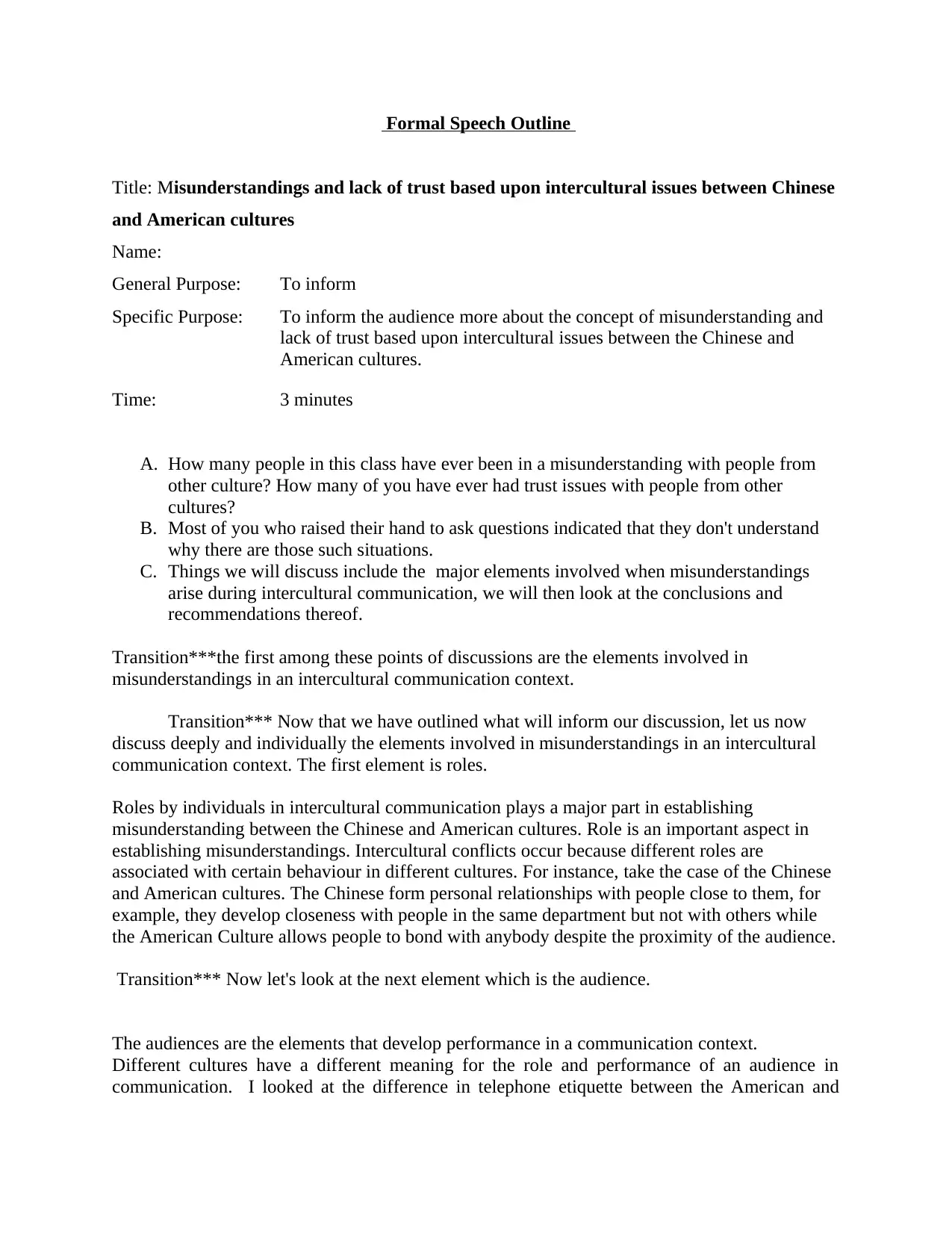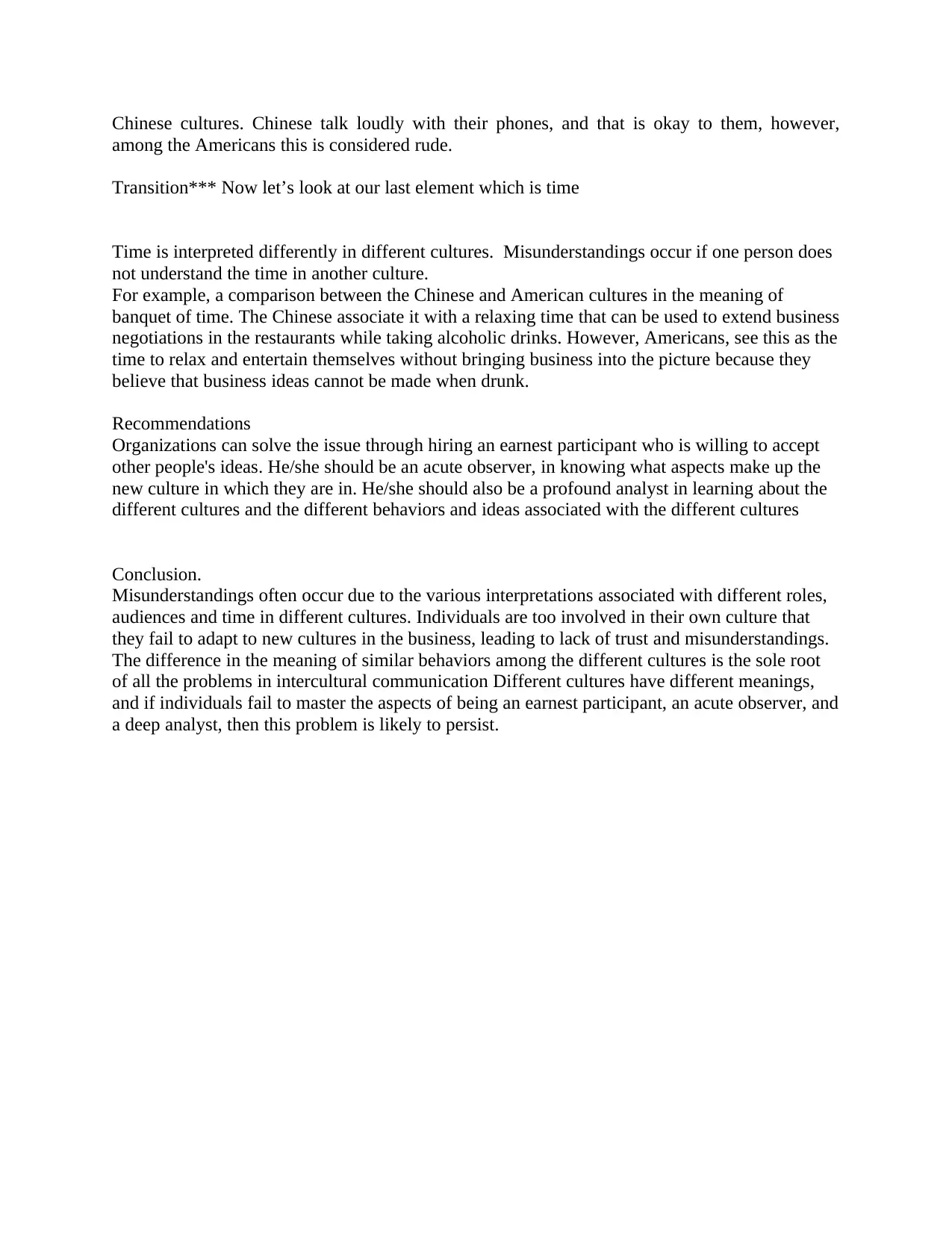Intercultural Communication: Chinese and American Perspectives
VerifiedAdded on 2021/06/15
|2
|668
|115
Presentation
AI Summary
This presentation delves into the complexities of intercultural communication, specifically focusing on the misunderstandings that arise between Chinese and American cultures. It begins by outlining the key elements involved in these misunderstandings, including the roles individuals play, the impact of the audience, and the perception of time. The presentation highlights how different cultural interpretations of these elements can lead to communication barriers and mistrust. It provides examples, such as differences in telephone etiquette and the approach to business negotiations, to illustrate these points. The presentation concludes by emphasizing the importance of understanding cultural nuances and offers recommendations for organizations to address these issues, such as hiring individuals who are adaptable, observant, and analytical of other cultures. The overall goal is to foster better intercultural understanding and reduce miscommunications.
1 out of 2








![[object Object]](/_next/static/media/star-bottom.7253800d.svg)